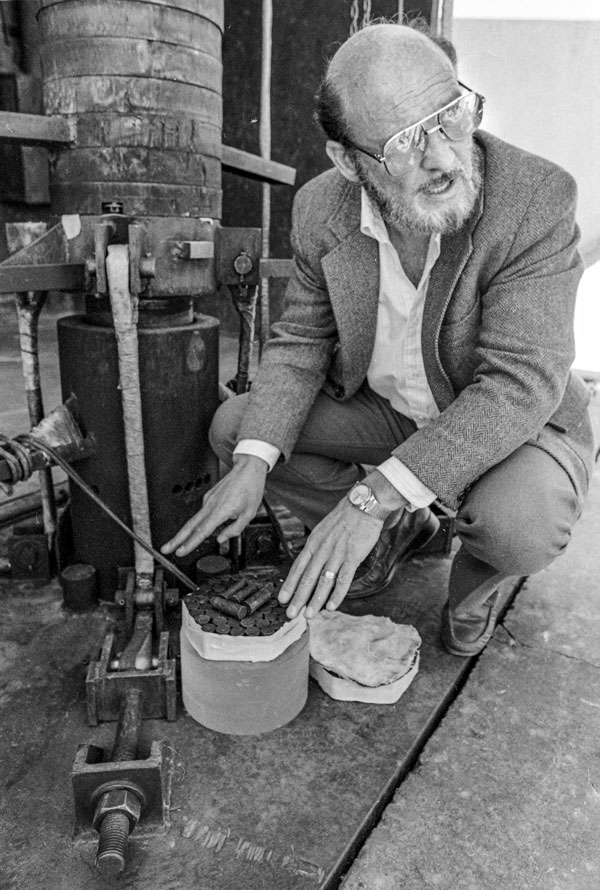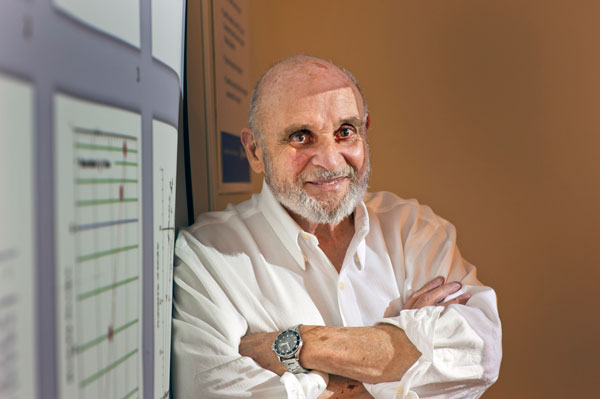Sandia explosives legend leaves behind legacy of service and expertise

Paul Cooper, one of the world’s foremost explosives experts, passed away recently at the age of 83. Paul retired from Sandia in 2012, but his explosives research, seminal textbook and mentorship of future scientists lives on at the Labs and in other organizations internationally.
Outside of his field, Paul is most well-known for his work on the investigation of the 1989 USS Iowa gun turret explosion in the Atlantic Ocean, which killed 47 crewmen. The investigation and Paul’s testimony before the Senate Armed Services Committee led to the Navy subsequently reopening its investigation and ultimately withdrawing accusations against a dead crew member.
As a chemical engineering graduate of the Brooklyn Polytechnic Institute, Paul joined Sandia in 1964 and worked with explosive components until 1977, when he was recruited by the Labs’ Underground Nuclear Testing arming and firing group, where he worked on explosive systems design until he retired in January 1997.
In 1979, Paul joined the national Nuclear Emergency Search Team, now called the Nuclear Emergency Support Team, NNSA’s team of scientists, technicians and engineers who respond to radiological accidents and incidents anywhere in the world.
In October 1991, Paul was named to a United Nations/International Atomic Energy Agency inspection team sent to Iraq to look for evidence of weapons of mass destruction following Operation Desert Storm. The investigation led to Iraq declaring officially for the first time that they had a nuclear program.
Expertise sought in investigations
Paul was part of a presidential commission that investigated ATF and FBI actions in Waco, Texas, after surviving Branch Davidians alleged the FBI started the fire. Paul’s investigation supported the commission, which confirmed that the Davidians were making explosive devices and set the fire in bales of hay.
The State of Oklahoma asked Paul for investigative help in the trials of Timothy McVeigh and Terry Nichols in the April 19, 1995, bombing of the federal building in downtown Oklahoma City that killed 168 people. Paul went through files and studied photos of broken windows, overturned cars and the crater, and closely matched the amount of explosive material McVeigh and Nichols had bought in Kansas and Texas with the damage. That calculation was used in the state trial.
During the investigation of the July 1996 explosion of TWA Flight 800 over Long Island, New York, that killed all 230 people on board, Paul was part of the complex, four-year inquiry that concluded the probable cause of the accident was an explosion of fuel and air vapors in a fuel tank, most likely due to a short circuit. His calculations became part of the final report.
Teacher and storyteller
In addition to great insight and technical expertise, his former students say Paul was a natural storyteller and teacher, and taught with expertise, humor and a dash of irreverence. His classes also remained popular due to a lack of formal explosives training in the U.S. Paul taught explosives safety and technology to more than 1,000 engineers at Sandia and hundreds more at private and government facilities nationwide.
Paul’s class notes were turned into the 1996 book, Explosives Engineering, which remains the definitive text on explosives and is used in university and engineering programs worldwide.

“In person and through his book, Paul has taught three generations of engineers how to do explosives. His book remains the world standard textbook for how to do useful things with explosives. Before Paul’s classes and book, engineers had to figure out how to do everything themselves. Paul put it in a format that made it useful for engineers,” said recently retired Sandia explosives engineer Mark Grubelich.
“Paul also didn’t have the ability to not work. He continued teaching both at Sandia and the military for decades after he retired from Sandia,” Mark said.
Sandia explosives engineer Saul WVenner met Paul during his Sandia interview day in February 2001, and he worked with and learned from him for the next 19 years.
“Paul was an engineer’s engineer and never encountered a data set he couldn’t plot as a straight line. He had a remarkable ability to break down complex problems into subcomponents and define closed-form solutions that were elegant, yet tractable. These contributions to design, analysis and quantification of energetic systems largely define the term ‘explosives engineering’ as we know it today. He was instrumental in defining curriculums for universities offering undergraduate and graduate explosives engineering degrees in the U.S. His texts are go-to resources for students, practicing engineers and even special effects designers,” Saul said.
“Paul’s ability to understand the optimal balance of detail and intuition is what has made him the best engineer I have ever encountered,” said Sandia explosives engineer Jerry Stofleth. “His ability to understand the balance between seriousness and humor, between work and play, between associates and friends, is what has made him one of the best people I have ever encountered.
“When he retired, he asked me to host his party. His one request was that I didn’t allow any discussion of engineering or work at Sandia at all. He wanted a roast — he wanted people to tell jokes and make fun of him, and each other,” Jerry said.
In a Lab News interview from 2015, Paul described his career with his characteristic grace and humility. “Along the way, wonderful things happened,” he said. “I was just in the right place at the right time.”